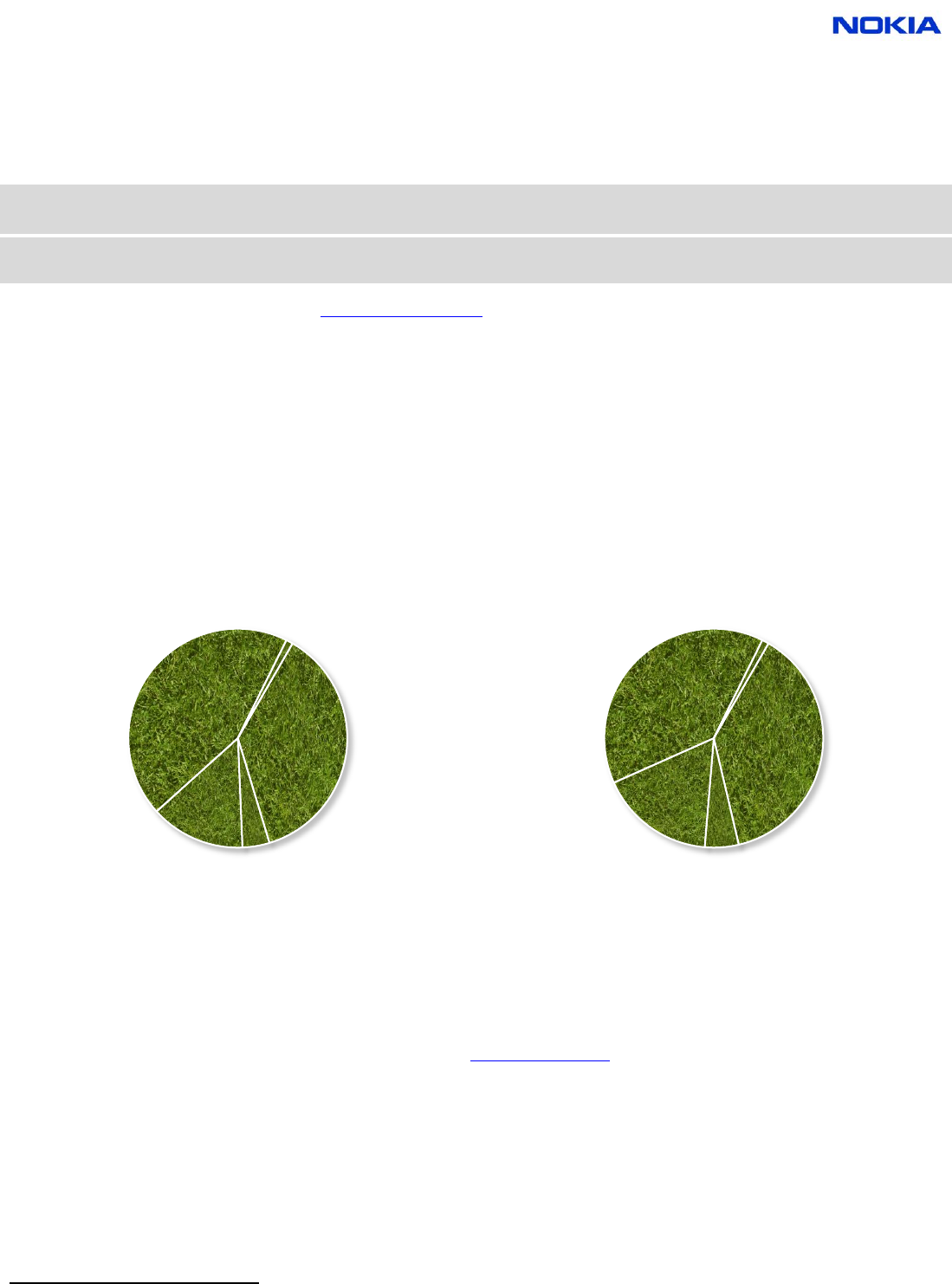
12.04.2012
Sales package content and product features might vary depending on region and product variant.
Copyright © 2011. All rights reserved. Nokia is a registered trademark of Nokia Corporation.
Recycling
Always return your used electronic products, batteries, and packaging materials to a dedicated recycling collection point. This way you
help prevent uncontrolled waste disposal and promote the recycling of materials.
All mechanical parts as well as packaging materials have been marked where practically possible.
2
Plastic parts are marked in accordance with ISO
11469 and ISO 1043-1 to -4 standards.
This product and its battery have been marked with the crossed-over wastebasket symbol (WEEE Directive) to signify that they cannot be disposed of
with regular household waste and need to be taken instead to an appropriate collection point.
Check how to recycle your Nokia products at www.nokia.com/recycle
Environmental impact
Energy use: 154 MJ
3
Greenhouse gas emissions: 8 kg CO2-eq.
3
These figures represent the estimated environmental impact of this device over a product life cycle including 3 years of usage. This
impact is equal to driving 53km in a typical family car. The mobile phones with basic functionalities have typically smaller
environmental impact than the devices with wide range of features. However, the latter ones provide the user with more
opportunities to reduce the personal environmental footprint by reducing the need to buy, use and charge multiple devices.
Energy use
Greenhouse gas emissions
The above energy use and greenhouse gas emissions figures are based on a Life Cycle Assessment in accordance with the ISO 14040
and ISO 14044. These calculations take into account the raw materials acquisition, component manufacturing, Nokia’s own factory
processes, inbound & outbound logistics, usage (3 years) and recycling of the mobile devices. The source data is measured at our own
factories and operations and collected from suppliers. In addition we use internationally available LCI databases.
The life cycle assessment method has been externally audited. The environmental impacts of different accessories, packaging, user
guides, and Nokia corporate overhead including travel are not included.
Find out more about the environmental impact of our products at www.nokia.com/LCA
2
Dependent on size, location and materials of the part.
3
The results of a life cycle assessment (LCA) always depend on the calculation method, scoping and assumptions used; and they reflect our
understanding at the time when published. The results are therefore not directly comparable with those conducted by other parties.
Raw materials
& component
manufacture
37%
Nokia factory
4%
Transportation
14%
Product usage
44%
Recycling
1%
Raw materials
& component
manufacture
38%
Nokia factory
5%
Transportation
17%
Product usage
39%
Recycling
1%





